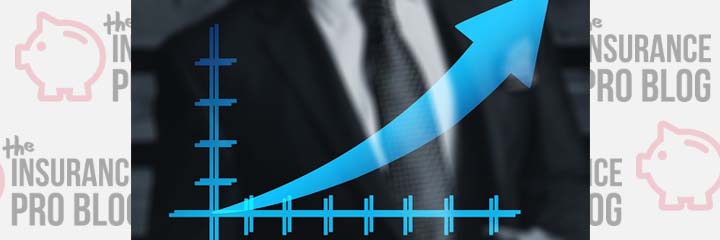Principal National Life has released its product for the indexed universal life market. Indexed Universal Life FlexSM is the name of the product and it carries some interesting features including an S&P 500 Total Return indexing fund (i.e. taking dividend reinvestments into account, this is a first for the indexing world).
We’ve only taken a cursory look at the product so far, but here’s what we like and don’t like about it.
First the positives:
A Total Return Indexing Options
Though it’s never really dragged indexed products down, one of the theoretical debates that has existed regarding indexing is the fact that it only followed the price return S&P 500 (i.e. sans dividends). Any apt investment salesman could point out that a large portion of the return in the S&P 500 that goes into the numbers that people like Dave Ramsey quotes (incorrectly) include an assumption about dividend reinvestment, which the Price Return Index ignores.
The take away message is that the yield is lower when you do this. I’d contend that when you don’t have to start over again when the market faces a correction negates this fact more or less, but there are those who still wish to only use historical data when it’s convenient and instead get philosophical when the numbers don’t back the claim.
Our good friends of Principal have provided us with a product that stops this objection dead in its tracks with a Total Return Index option (i.e. dividends included). As far as I’m aware, this is the first time such an option has existed on an indexed universal life product, and kudos to Principal for rolling it out.
However, the option only appears to be available on their monthly averaging indexing option, which is kind of disappointing. Regardless of this, the product also includes a standard one year point-to-point option for the Price Return Index, which will probably outperform the Total Return Index using monthly averaging.
Tempered Return Assumptions
I was somewhat surprised, but also pleased to see assume illustrated maximum rates below 7%. We’ve made no big secret of the fact that we get annoyed with agents/brokers and companies who show these products assuming an 8% rate of return each year (unlikely to average our that high), so we’re delighted that Principal has proactively stopped agents from over shooting their return assumptions.
Principal’s Underwriting
This isn’t exactly a feature of the product, but a nice tangential benefit. The product is issued by Principal National, a company with a pretty good reputation for having a really good (defined as they give us offers we like) underwriting department.
It won’t matter to the healthy individuals looking to purchase indexed universal life, but for those who have a few heath concerns Principal could be the answer for an attractive offer that doesn’t prohibit the purchase with excessive insurance costs.
Now for the small list of things we’re not crazy about:
11% Cap Rate on One Year Point-to-Point
While this cap rate certainly isn’t bad, it’s also not placing Principal at the top of any list for performance. And based on the limited number of indexing options, they’ve backed themselves into a bit of a corner regarding return potential. Practically speaking there’s really nothing wrong with being boxed in by this. It will probably place them at a bit of a disadvantage when it comes to their competitiveness among agents/brokers as they look for ways to augment return assumptions.
To be clear, I don’t think it’s that big of a deal, but from a pragmatic point of view, it’s going to be a harder sell for Principal when it comes to convincing agents/brokers and brokerage agencies to talk about the product.
No Indexed Loan
This one is probably the most disappointing. We saw no option for an indexed loan, just a fixed loan that appears to be guaranteed wash loan starting in year 11. Further, the illustration had a fit when we wanted to illustrate loans only, as opposed to withdrawal to basis and then loans.
However, the product performed rather well against some comparisons we made to other carriers on a max income solve. It didn’t win any of those comparisons, but it didn’t place badly.
20 Year Surrender
We don’t love the 15 year surrender period’s that exist out there (but we can live with them) 20 seems ridiculously long. We thought these days were over, but it looks like Principal is holding on to an old practice that we maintain over states an insurer’s cost of acquiring business. Boo on this one.
All and All Pretty Good

We’re glad to see a carrier with a well-known practice of lenient underwriting to enter the indexed universal life market. Prudential tried, and that product is okay, but it’s certainly much happier focusing on death benefit than on cash accumulation and income generation. We now have an addition to the generally generous underwriting departments of Lincoln National and John Hancock (and a product that might just compete well against Lincoln). Welcome to the game Principal. We’re glad you’ve arrived.

